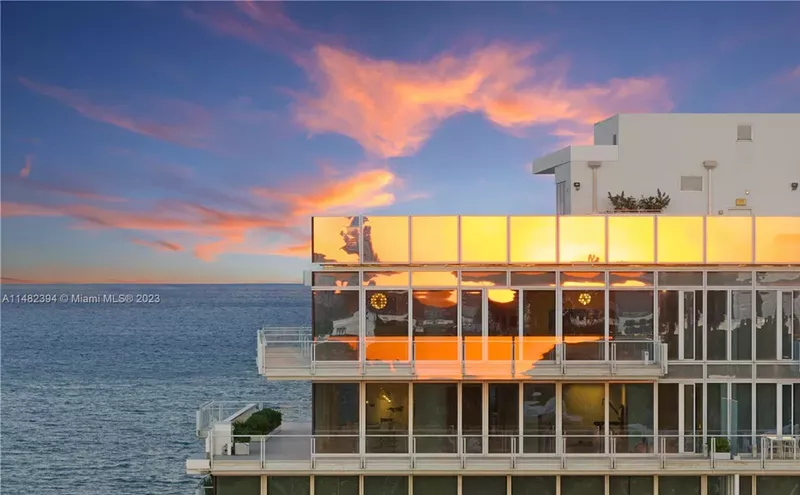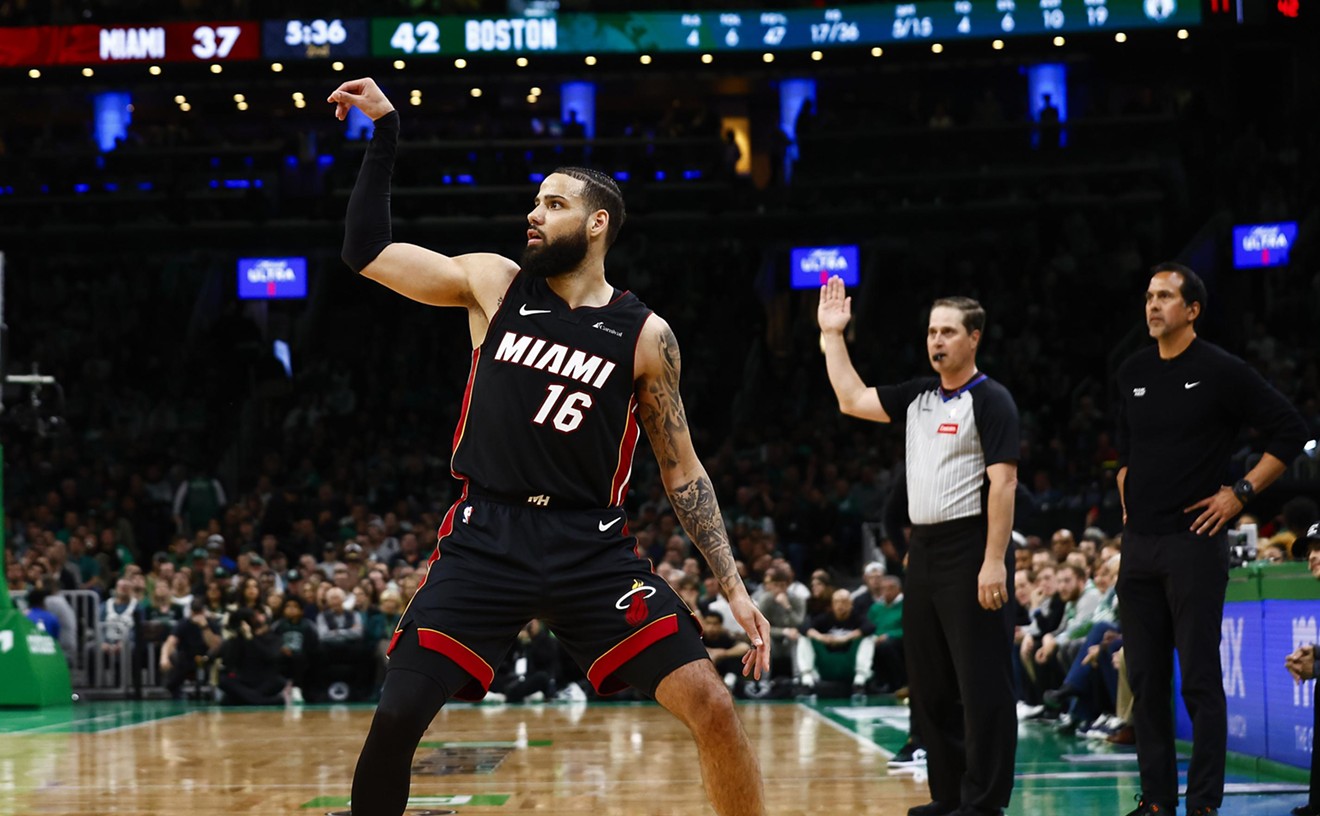A homeless man who spots Bane asks: "Hey, when y'all going to finish here?"
"You didn't see the news?" Bane replies.
"Oh, yeah, one of y'all got busted," responds the man, who introduces himself as Lucious (pronounced Loo-shus). He tugs on the greasy bill of his baseball cap. "Hey man, what they messing with him about? About this? About graffiti?"
"That's right. Now it's going to be a long time before this [mural] is finished," Bane mutters.
"That's bull," Lucious erupts. "Man, let me talk to them, I'll tell 'em what time it is. This ain't graffiti. This is art." Lucious points to the unfinished production spray-painted on a wall overhead. It's a scene a la Alice in Wonderland of a young girl leaping into a warped world, where an anthropomorphized door with eyes and a mouth bends toward her. The colors are dynamic and the figures expertly rendered.
Street artists like Bane admit they sometimes consciously violate the law. When caught they expect to be punished; it's the cost of expressing themselves. But two weeks ago Bane and his friends thought they had plunged through the looking glass into a newly twisted reality when Miami police came down with unprecedented severity on two well-known graffitists. They arrested Michael Sakezles, a nineteen-year-old delivery boy whose tag is "Crook," on felony criminal mischief charges. He could spend up to five years in prison. Though the prosecutor asked for a one-million-dollar bond, the judge set it at $50,000. The arrest prompted another graffiti virtuoso police wanted, 22-year-old Anwar Kahn, whose tag is "Crome," to flee. He is in hiding with no immediate plans to turn himself in, according to two friends who asked not to be identified. Police claim the pair have caused damage worth tens of thousands of dollars, a figure that primarily represents the cost to paint over their work. The arrest came after a WPLG-TV (Channel 10) report on Crome and Crook triggered other local media to jump on the story.
"This is crazy," says Bane, who has partnered with Crome on past murals. "We're not criminals." Bane and several of his fellow graffitists are college students. One works in an artist's studio. Some toil in offices.
Bane says he started in graffiti about five years ago with some friends. "It was the quickest, easiest fame I ever got." In the early days he hit everything from rooftops and green highway signs (called heavens in the trade) to U-Haul trucks and freight cars. That's when he met Crome.
Bane is a member of the graffiti crew MSG, which Crome founded in the early 1990s for people determined to attach their tag to some elaborate work. "We're not a gang. We're just a bunch of friends who draw and paint," he says. The meaning of MSG is fluid. The initials can stand for everything from Metro Style Graffiti to Metabolic Scientific Geniuses. MSG, which includes about twenty members, is one of several groups in town. Other crews include OBS and STV. (Bane doesn't know the meaning of these acronyms.)
Graffiti artists in general produce both legals, drawings that are done with the permission of a building owner, and illegals. Burners, the big showoff pieces, are generally legal because so much time is needed to paint them; artists work for days, often basing their work on a sketch. The more common illicit paintings are called throwups, the spidery street-scrawl that is usually the writer's tag, and pieces, the more carefully colored pudgy, balloonlike letters. Saturating an area with one's tag is called bombing.
Bane says news accounts, including a bloated anti-graffiti March 18 Herald editorial column, are distorted. So he gave New Times a tour of MSG burners, including Crome and Crook's work. The art speaks for itself:
*NW Eleventh Street and First Avenue: "What better place to put Alice in Wonderland than in Overtown?" Bane says about the most current MSG work, done by Bane and Crome. "This place is a fantasyland." The bright colors and cartoony innocence of Alice contrast the neighborhood's urban blight, he comments. And there's a second, more abstract meaning: The picture reflects the surreal landscape created by decay and drug use.
*The railroad tracks near NE 23rd Street: "The theme of this one is Devil's Advocate," Bane says about the mural fronting the railroad tracks. The colors, blacks, blues, and reds, give the piece a somber, malevolent tone. But the characters, including a chubby, winged demon and a corporate-looking devil, are so confident and self-satisfied they aren't threatening; they're charming.
*NE 29th Street near Miami Avenue: "This is people's art, the art of people," declares a homeless man who is sitting beneath MSG's Tunnel Vision. Then he takes a hit from a glass crack pipe. In this burner by Crome, Bane, and friends, a cowboy on an elephant races down a black ribbon of road. The piece relies on contradictions and contrasts like the speeding pachyderm and a tunnel entrance labeled "Dead End."
In the subculture of those who surreptitiously mark Miami's urbanscape, Crome has perhaps the most name recognition and skill. His graphics shimmer, and his burners, which include about a dozen works in alleys and warehouses across South Florida, convey surreal themes involving devils, time warps, and fantasy.
Crook, whom Crome mentored, was a relative newcomer to the scene, according to Bane. "Crome, he was like the big man on campus. Crook was actually new. He hasn't been painting that long," Bane explains. "What happens at MSG is, we'll have a bunch of members, but as time goes by, some people leave and you got to keep the crew running. So you find people. Someone with potential like Crook, we saw him and we were like, 'Wow, this kid's going to be getting up [doing graffiti] a lot, maybe we should help him learn. It looks like he's got the heart to do it.' And he did. Now look where it got him."
Most serious graffitists have tangled with the law. When Bane was convicted of defacing property at age eighteen, a judge sentenced him to 50 hours of community service. Crook had a prior arrest for malicious destruction of property, but the case was not prosecuted. Crome admitted to being on probation after several arrests for graffiti. (His record is sealed because he was a juvenile at the time.) In June 1997 Crome was charged with marijuana possession and having an open container of alcohol in a car. His sentence was suspended.
In fact graffiti would lose some meaning if it were decriminalized, Bane says. "It would become worthless. Everybody would do it."
Unless he turns himself in, or is caught, Crome's fame is now his biggest liability. His tag will likely alert police to his whereabouts.
Crome declined, through an intermediary, to speak to New Times. But prior to his arrest an online graffiti magazine called GraffScene interviewed him. (Two MSG members confirm it is genuine.)
GraffScene: So what do you have in store for the future?
Crome: A lot more productions and more ill ass bombing, but a nigga'z on probation so I gots to tag chill a bit. But still a lot of top2bottom productions.
GraffScene: What do you prefer, legals or illegals and why?
Crome: Legals because I've been caught too many times doing illegal pieces.... Legals you can take your time and do better shit.
Miami photographer Bob Edelson is a fan of the skill and raw energy of artists like Crome. Soho Books just published Edelson's tome New American Street Art, which contains photographs of graffiti throughout the country. The book includes pictures of two MSG pieces. "I know it's not legal, but these guys are artists, they can't help themselves. [MSG's murals] are some excellent examples of the best of American street art," he says, adding, "I can't believe these guys can get jail time."










